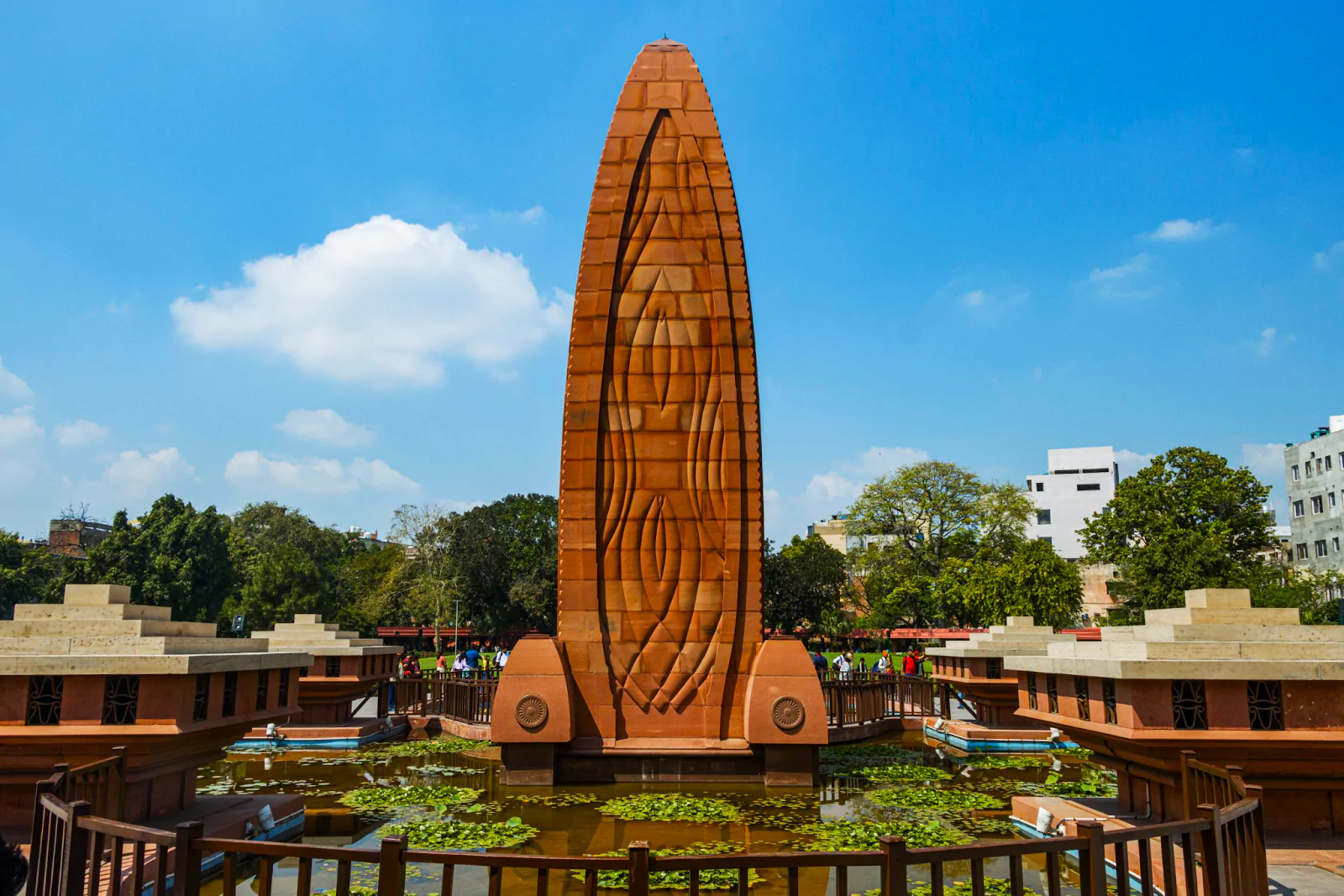Context
The Prime Minister tribute recently honored the victims of the 1919
Jallianwala Bagh massacre.

Jallianwala Bagh Monument in Amritsar
- National Monument: The site of the massacre is now a national monument, which serves as a reminder of the horrors of colonialism and the struggles for independence.
- Yaad-e-Jallian Museum: A museum was also built in March 2019, called Yaad-e-Jallian Museum, to provide an authentic account of the massacre.
Enroll now for UPSC Online Course
Jallianwala Bagh Massacre
- About: On April 13, 1919, a large peaceful gathering had formed at Jallianwala Bagh in Amritsar on Baisakhi to protest against the Rowlatt Act.
- General Dyer, a British commander stationed in Punjab, ordered as many as 50 troops in Amritsar to start shooting at civilians, including women and children.
- Toll on Human Lives: The atrocity claimed the lives of at least 379 individuals and left over 1,500 injured.
- The tragedy sparked a nationalist movement that aimed to achieve independence and attracted significant international attention.
- Protest by Nationalist Leaders: Rabindranath Tagore surrendered his knighthood in protest of the Jallianwala Bagh massacre.
- Mahatma Gandhi relinquished the title of ‘Kaiser-iHind,’ bestowed by the British.
- started the non-cooperation movement after the Jallianwala Bagh Massacre.
Background of Jallianwala Bagh Massacre
- Approval of the Rowlatt Act: In late 1918, the approval of the Rowlatt Act by the Imperial Legislative Council sparked a strong sense of anger across the nation.
- Satyagraha Pledge: The satyagraha pledge was led by Mahatma Gandhi in Ahmedabad on February 24, 1919 which promised to disobey specific regulations, to be determined by a ‘committee,’ until the proposed Rowlatt law was scrapped.
- Call for Nationwide Strike: On April 6, a call was made for a nationwide strike which saw unparalleled success.
Views of historians or prominent figures Over Jallianwala Bagh Massacre:
- Historian Kim Wagner: “The spectre of 1857 turned riots into rebellion and nationalist agitation into anti-British conspiracies, where local unrest could easily assume the proportion of major political crises.” (Amritsar 1919, 2019).
- Mahatma Gandhi: In article “Jallianwala Bagh” written in Young India on February 18, 1920, he described the massacre of innocent civilians as a “tragedy of first class national importance.”
- Jawahar Lal Nehru: He denounced it as a ‘monstrous crime,’
|
- British Suppression and Deportation of Leaders: Gandhi attempted to travel to Amritsar, but the British government led him back to Bombay (now Mumbai).
- Two leaders of the Punjabi satyagraha were forcibly deported. There was an instant public outcry in Amritsar following the incident.
- Brutal Crackdown by General Dyer: The province’s Lieutenant Governor, Sir Michael O’Dwyer surrendered the city to the army, led by Brigadier General Dyer.
- About 20,000 people had assembled at the site on April 13. General Dyer showed up with an armed contingent and gave his men the command to fire without any prior warning.
- The gunfire continued until 1,650 bullets were fired. The firing stopped only when the gunpowder had run out.
- Hunter Commission: Lord William Hunter, former Solicitor-General of Scotland and Senator of the College of Justice in Scotland, presided over the investigative commission known as the Hunter Commission formed in 1919.
- The exchanges between the commission and Dyer are detailed in Nigel Collet’s 2006 book The Butcher of Amritsar: General Reginald Dyer.
- Impact: According to many historians, this was a turning point in Indians’ relationship with their British colonists, and thus a pivotal moment in the course of India’s struggle for independence.
Enroll now for UPSC Online Classes
Also Read: Non Cooperation Movement 1920

